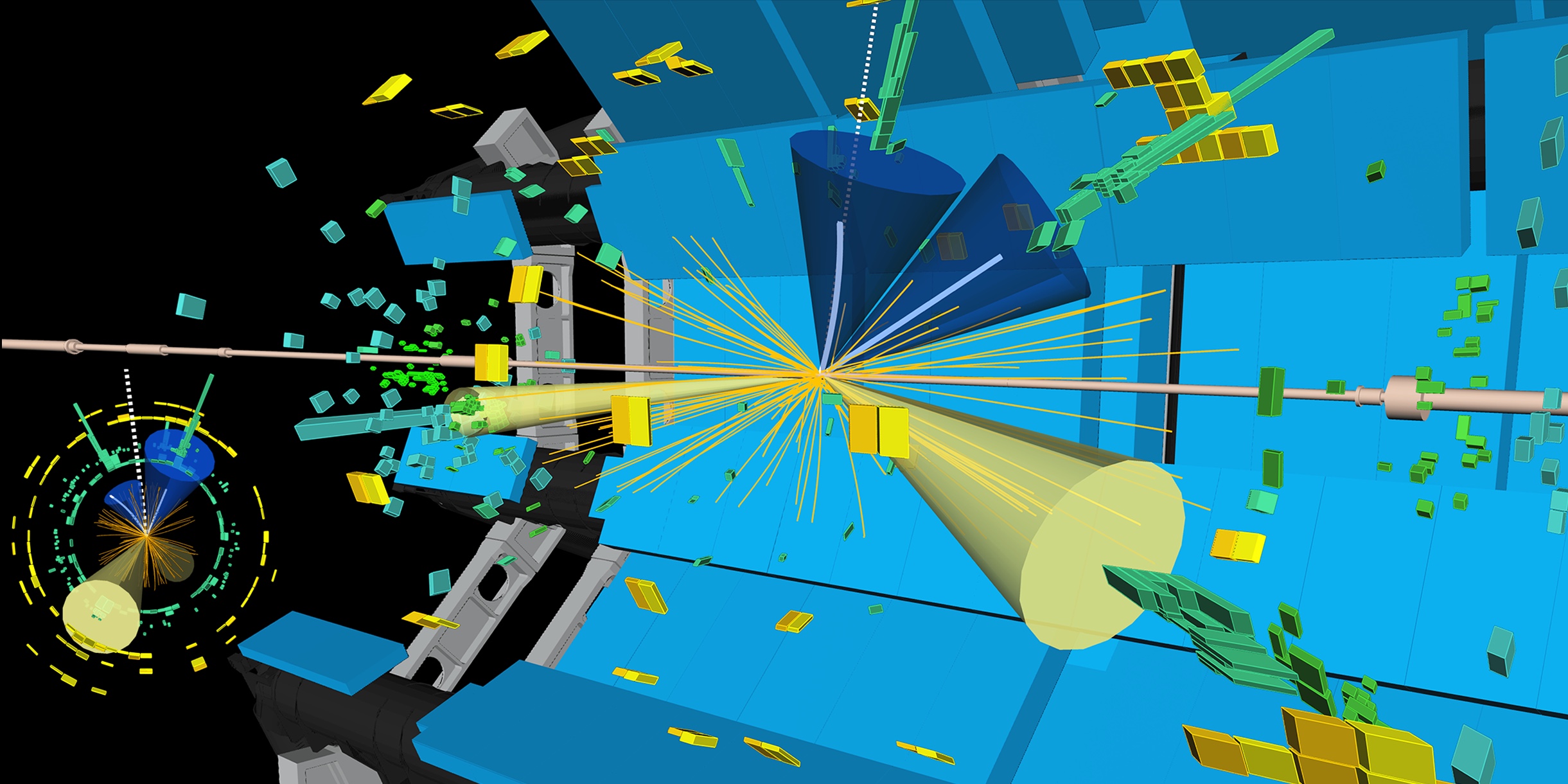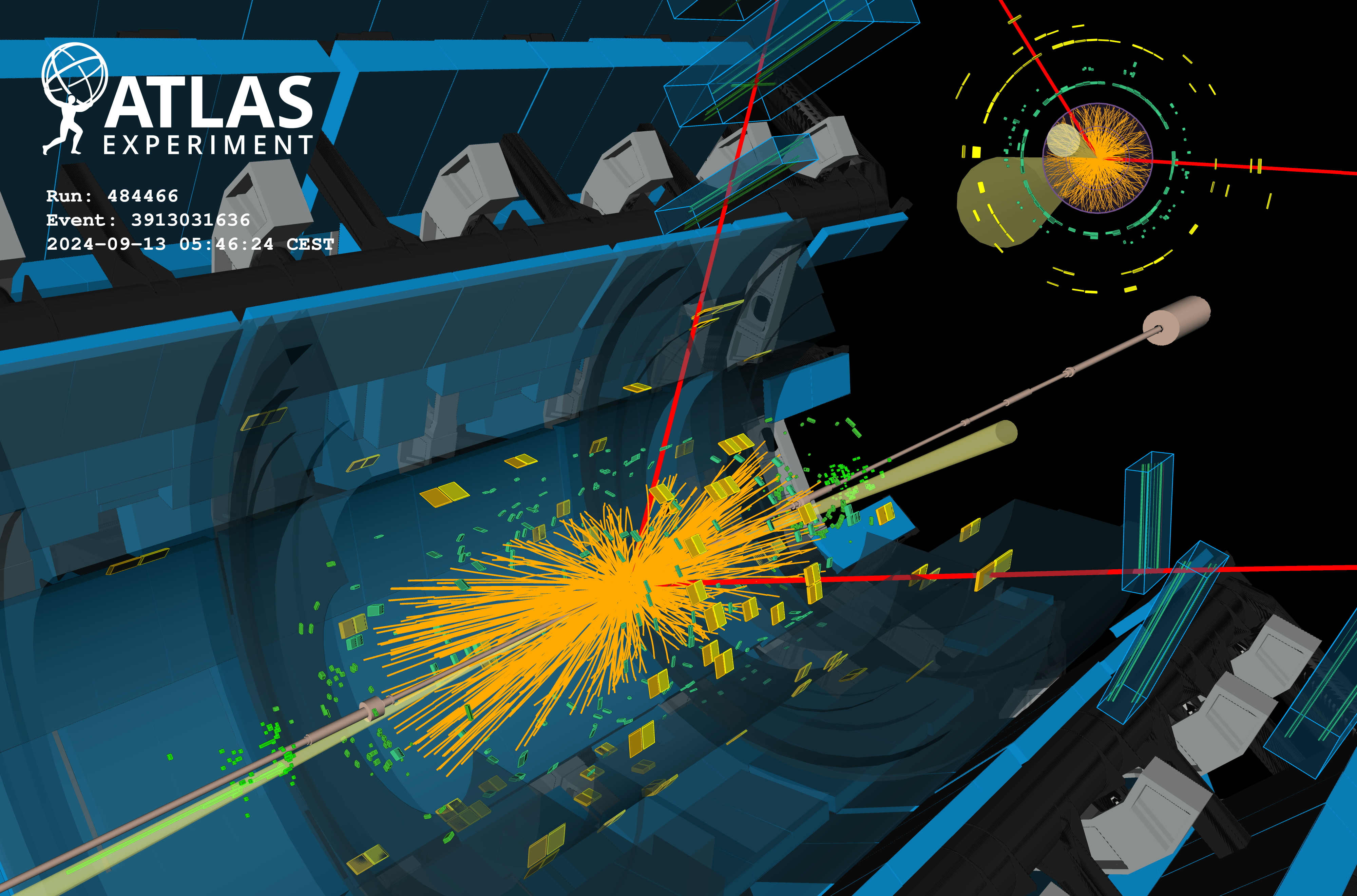ATLAS measures symmetry of Higgs boson decays to tau leptons
20 May 2022 | By
The Universe can be elegantly described by several fundamental symmetries. For example, almost all Standard Model processes are identical when electric charges are inverted and kinematics are mirrored (this is known as charge-parity symmetry, CP). However, the weak force violates this symmetry.
Such broken symmetries not only describe what we see – they are the reason we see anything at all. After the Big Bang, antimatter and matter should have been created in equal amounts. Why we live in a Universe of matter, with very little antimatter, is one of the big open questions in physics. Although the CP-violating processes described by the Standard Model can affect the decay rates of particles and antiparticles, they alone do not explain this mystery. There must be more CP-violating processes out there!
The ATLAS Collaboration's latest measurement gives new insight into the symmetry of Higgs boson interactions.
Since discovering the Higgs boson in 2012, physicists have wondered whether its interactions are symmetric under CP or whether they could be affected by a new source of CP violation. One way of testing this is to measure the Higgs boson decay into two tau leptons (H→ττ). The process was first observed by the ATLAS Collaboration in 2018 and a more precise measurement of its cross section was recently published.
The ATLAS Collaboration has just released a new measurement of the CP properties of H→ττ interactions. The study of H→ττ allows researchers to understand the CP-nature of Higgs boson interactions, which could be CP-even (symmetric under CP transformation as expected in the Standard Model) or CP-odd (asymmetric under CP transformations), or a mixture of both (described by the CP mixing angle, φτ, and implying CP violation).


To achieve this new measurement, physicists began by looking for collision events originating from Higgs-boson decays to tau leptons. These tau leptons decay before they reach the detector. After identifying the tau-lepton decay products, physicists could reconstruct the decay planes of both tau leptons in the event. In case of a tau-lepton decay to a charged and a neutral pion, the decay plane is spanned by the two pion directions. In the case of a tau-lepton decay to a single charged pion or lepton, the second vector of the decay plane was defined by the direction from the collision vertex to the most probable position of the tau-lepton decay, given by the point of closest approach of the charged particle trajectory to the collision vertex.

With these two decay planes defined, researchers were able to calculate the angle (φ*CP) between them in the rest-frame of the reconstructed H→ττ decay, which is sensitive to the CP mixing angle, φτ. To compare theory to data, they simulated what the φ*CP distributions would look like for different CP hypotheses (see Figure 1). Figure 2 shows the observed φ*CP distribution from different signal regions, alongside the expected distributions from a Standard-Model H→ττ signal and background processes. The most important background in this analysis comes from decays of Z bosons into two tau leptons (Z→ττ). Though these look very similar to the signal events, they can be distinguished due to the different masses of the Z and H bosons. In addition, due to its spin of 1, Z→ττ decays show no modulation in the φ*CP distribution (unlike that seen in Figure 1).
With these measurements now in hand, researchers could finally determine the most probable values for the CP mixing angle and look for signs of new CP violation. As seen in Figure 3, the best fit is φτ=9° ± 16°, which is consistent with the Standard Model expectation of a CP-even Higgs boson. The measurement excludes large CP-mixing angles of φτ < -25° and φτ > 43° with 95.5% confidence.
The Standard Model holds strong – for now. The search for new sources of CP violation will continue in Run 3 of the LHC. The additional data will greatly benefit measurements such as this one, which is currently limited by the available statistics.
Learn more
- Measuring CP properties of Higgs boson interactions with τ leptons with the ATLAS detector (ATLAS-CONF-2022-032)
- Reconstruction of hadronic decay products of tau leptons with the ATLAS experiment (Eur. Phys. J C 76 (2016) 295, arXiv: 1512.05955, see figures)
- Measurements of Higgs boson production cross-sections in the H→ττ decay channel in proton-proton collisions at 13 TeV with the ATLAS detector (arXiv: 2201.08269, see figures)
- Beyond any doubt: Higgs boson couples to the heaviest lepton, ATLAS Physics Briefing, June 2018
- LHCP 2022 presentation by Jeffrey Davis: Higgs properties (CP, mass, width,..) at ATLAS and CMS
- LHCP 2022 presentation by Karsten Koeneke: Precision Higgs experiment
- LHCP 2022 presentation by Marumi Kado: ATLAS Status and Overview
- See also the full lists of ATLAS Conference Notes and ATLAS Physics Papers.




